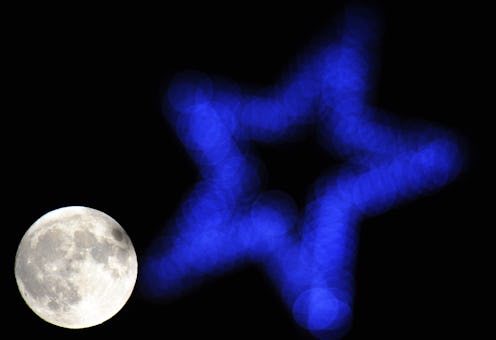News
Photos Of The Christmas Full Moon
The last full moon of the year also happens to be the first on Christmas in 38 years. Photos of the Christmas full moon offer a festive, bright look at the night sky from around the world. Given the time of year, this special lunar occurrence is also known as the full cold moon, though the temperature of the moon is neither affected by its phases nor the weather on earth. Nonetheless, NASA's John Keller, who works at the Goddard Space Flight Center describes it as a special event that showcases the moon's unique relationship to earth. Keller said:
As we look at the moon on such an occasion, it's worth remembering that the moon is more than just a celestial neighbor. The geologic history of the moon and Earth are intimately tied together such that the Earth would be a dramatically different planet without the moon.
The week was a fairly active one celestially, with Asteroid 2003 SD220 passings its closest to earth the night of Christmas Eve a full 28 times further away than the moon. The asteroid posed no threat and instead offered up a unique look at the impressive technology that is able to track it. NASA's Jet Propulsion Lab was able to get some radio images of the asteroid. It was the moon, however, that was the real star of the holiday sky.
The best time for those interested in catching the full cold moon was on Christmas at around 6:11am, when it reached its peak. The next full cold moon to appear on Christmas day won't be seen until 2034 — that's a full 19 years from now. The previous one took place in 1977. Photos have been surfacing from all over the world showcasing just how luminescent the moon was from late last night until the early morning. Given technological advancements over the decades since the last Christmas full moon, the pictures that have been taken are worlds away from their 1977 counterparts.
A fascinating fact not just about the Christmas full moon but the lunar cycle in general is that it operates on a 19 year pattern that hedges fairly closely to our 365 day calendar known as the Metonic cycle. The last Christmas full moon took place two Metonic cycles ago though it came close to the standard 19, with a full cold moon falling on Christmas Eve of 1996. It's rather lucky that we won't have to wait a full 38 years for the Christmas full moon to make its presence known once more. Who knows how advanced and amazing photos from the next one will be?
